Preconceptional paternal caloric restriction of high-fat diet-induced obesity in Wistar rats dysregulates the metabolism of their offspring via AMPK/SIRT1 pathway
- PMID: 38851752
- PMCID: PMC11162063
- DOI: 10.1186/s12944-024-02161-6
Preconceptional paternal caloric restriction of high-fat diet-induced obesity in Wistar rats dysregulates the metabolism of their offspring via AMPK/SIRT1 pathway
Abstract
Background: Obesity is a metabolic syndrome where allelic and environmental variations together determine the susceptibility of an individual to the disease. Caloric restriction (CR) is a nutritional dietary strategy recognized to be beneficial as a weight loss regime in obese individuals. Preconceptional parental CR is proven to have detrimental effects on the health and development of their offspring. As yet studies on maternal CR effect on their offspring are well established but paternal CR studies are not progressing. In current study, the impact of different paternal CR regimes in diet-induced obese male Wistar rats (WNIN), on their offspring concerning metabolic syndrome are addressed.
Methods: High-fat diet-induced obese male Wistar rats were subjected to caloric restriction of 50% (HFCR-I) and 40% (HFCR-II) and then they were mated with normal females. The male parent's reproductive function was assessed by sperm parameters and their DNMT's mRNA expression levels were also examined. The offspring's metabolic function was assessed by physiological, biochemical and molecular parameters.
Results: The HFCR-I male parents have shown reduced body weights, compromised male fertility and reduced DNA methylation activity. Further, the HFCR-I offspring showed attenuation of the AMPK/SIRT1 pathway, which is associated with the progression of proinflammatory status and oxidative stress. In line, the HFCR-I offspring also developed altered glucose and lipid homeostasis by exhibiting impaired glucose tolerance & insulin sensitivity, dyslipidemia and steatosis. However, these effects were largely mitigated in HFCR-II offspring. Regarding the obesogenic effects, female offspring exhibited greater susceptibility than male offspring, suggesting that females are more prone to the influences of the paternal diet.
Conclusion: The findings highlight that HFCR-I resulted in paternal undernutrition, impacting the health of offspring, whereas HFCR-II largely restored the effects of a high-fat diet on their offspring. As a result, moderate caloric restriction has emerged as an effective weight loss strategy with minimal implications on future generations. This underscores the shared responsibility of fathers in contributing to sperm-specific epigenetic imprints that influence the health of adult offspring.
Keywords: Male fertility; Metabolic disorders; Paternal caloric restriction; SIRT1 and AMPK..
© 2024. The Author(s).
Conflict of interest statement
The authors declare no competing interests.
Figures

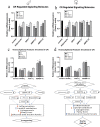
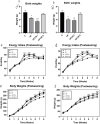
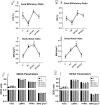
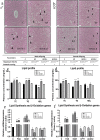
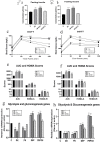
Similar articles
-
Calorie restriction with a high-fat diet effectively attenuated inflammatory response and oxidative stress-related markers in obese tissues of the high diet fed rats.Mediators Inflamm. 2012;2012:984643. doi: 10.1155/2012/984643. Epub 2012 Jun 19. Mediators Inflamm. 2012. PMID: 22778500 Free PMC article.
-
Resveratrol and caloric restriction prevent hepatic steatosis by regulating SIRT1-autophagy pathway and alleviating endoplasmic reticulum stress in high-fat diet-fed rats.PLoS One. 2017 Aug 17;12(8):e0183541. doi: 10.1371/journal.pone.0183541. eCollection 2017. PLoS One. 2017. PMID: 28817690 Free PMC article.
-
Moderate caloric restriction in lactating rats protects offspring against obesity and insulin resistance in later life.Endocrinology. 2010 Mar;151(3):1030-41. doi: 10.1210/en.2009-0934. Epub 2010 Jan 12. Endocrinology. 2010. PMID: 20068006
-
Calorie Restriction-Regulated Molecular Pathways and Its Impact on Various Age Groups: An Overview.DNA Cell Biol. 2022 May;41(5):459-468. doi: 10.1089/dna.2021.0922. Epub 2022 Apr 22. DNA Cell Biol. 2022. PMID: 35451872 Review.
-
Paternal obesity, interventions, and mechanistic pathways to impaired health in offspring.Ann Nutr Metab. 2014;64(3-4):231-8. doi: 10.1159/000365026. Epub 2014 Oct 2. Ann Nutr Metab. 2014. PMID: 25300265 Review.
Cited by
-
Beyond Genes: Mechanistic and Epidemiological Insights into Paternal Environmental Influence on Offspring Health.Curr Environ Health Rep. 2025 Aug 9;12(1):29. doi: 10.1007/s40572-025-00488-5. Curr Environ Health Rep. 2025. PMID: 40782138 Review.
-
Do Lifestyle Interventions Mitigate the Oxidative Damage and Inflammation Induced by Obesity in the Testis?Antioxidants (Basel). 2025 Jan 27;14(2):150. doi: 10.3390/antiox14020150. Antioxidants (Basel). 2025. PMID: 40002337 Free PMC article. Review.
References
-
- Asghari S, Asghari-Jafarabadi M, Somi MH, Ghavami SM, Rafraf M. Comparison of calorie-restricted Diet and Resveratrol Supplementation on Anthropometric Indices, metabolic parameters, and serum Sirtuin-1 levels in patients with nonalcoholic fatty liver disease: a Randomized Controlled Clinical Trial. J Am Coll Nutr. 2018;37(3):223–33. doi: 10.1080/07315724.2017.1392264. - DOI - PubMed
MeSH terms
Substances
LinkOut - more resources
Full Text Sources
Medical
Research Materials

